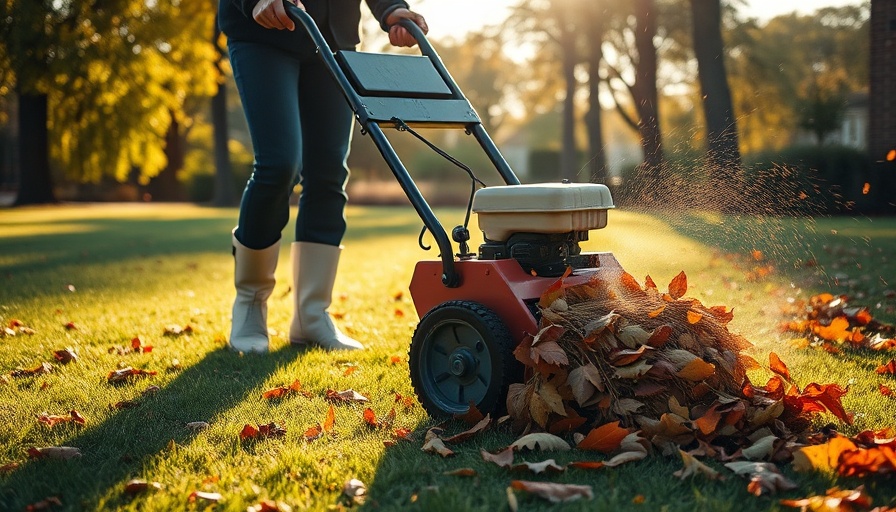
Understanding the Importance of Timing in Lawn Care
Homeowners often overlook the significance of dethatching within the broader context of lawn care. As Craig Elworthy from Lawnbright states, dethatching is essential for a healthy lawn, allowing crucial elements like light, moisture, and nutrients to penetrate more effectively. Unfortunately, many mistakenly think they can dethatch anytime, resulting in serious damage, especially if performed too late in the year.
When is Dethatching Essential?
The ideal time to dethatch varies depending on your grass type. For cool-season grasses, fall is typically the best time, allowing your lawn ample recovery before winter sets in. In contrast, warm-season grasses should be dethatched in late spring to early summer, as this aligns with their peak growth periods. However, once temperatures begin to drop significantly or grass growth has halted, it’s often too late to dethatch. This is crucial information for homeowners to remember: a healthy lawn requires appropriate timing for dethatching to minimize stress.
Signs You've Missed the Window for Dethatching
If you're unsure whether it’s time to dethatch, several indicators can help determine the right decision. Noticing halted grass growth or a significant drop in temperatures often signifies a missed opportunity. Experts like Chrissie Handley further recommend evaluating your lawn visually—if the lawn seems dormant and lacks vibrant color, pushing for dethatching at this time can lead to severe consequences, including long-term damage to your grass. Keeping a close eye on your lawn as fall progresses is vital.
The Risks of Late Dethatching
While you may feel tempted to proceed with dethatching late in the season, the risks often outweigh the benefits. According to extensive studies and expert insights, performing this operation during cold temperatures can leave your lawn weak and unable to recover before entering dormancy. This not only breaks down your grass health but can also attract pests, which thrive in weakened ecosystems. Furthermore, a stressed lawn is at higher risk for winter injury—a plight homeowners should strive to avoid.
Expert Tips for Future Dethatching Operations
For those looking to avoid the pitfalls of late dethatching, planning ahead is key. Keep a lawn care calendar that includes peak growth times for your lawn’s species, as well as local climate considerations. Additionally, consider pairing dethatching with other essential lawn maintenance services like aeration, overseeding, or fertilization to prepare your lawn for optimal recovery. Yellowing grass after dethatching can indicate that you may need to consult with local lawn care experts for a customized plan.
Available Lawn Care Services in Shelby, MI
If you’re feeling overwhelmed after reading about the carefully timed process of dethatching, you're not alone! Fortunately, residents in Shelby, Michigan have access to professional lawn services that can help. From dethatching services in Shelby, MI to comprehensive residential lawn care options, local experts are prepared to turn your lawn into the lush outdoor scene you envision. Whether you’re looking for a one-time lawn service or ongoing maintenance, reaching out to trusted lawn service providers in your area could prove invaluable for your lawn's health moving forward.
 Add Row
Add Row 
 Add
Add 


Write A Comment